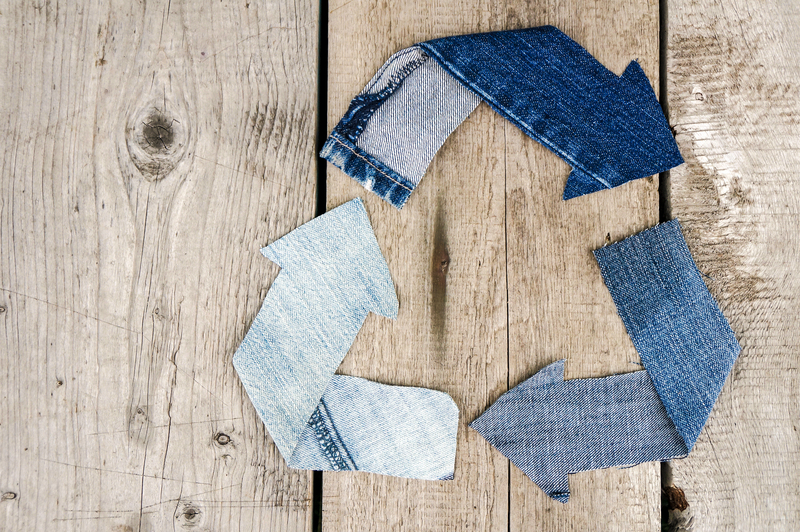Effective Cost-Saving Approaches for Bulky Waste Items
Bulky waste items--such as old furniture, large appliances, mattresses, and other oversized household items--can be a considerable challenge when it comes to disposal. Not only do these items take up significant space, but their removal can also be expensive and environmentally taxing. Adopting cost-saving approaches for bulky waste items not only helps manage expenses but also promotes sustainable waste disposal practices.
In this comprehensive guide, you'll discover various strategies to save money while responsibly managing bulky waste. We'll explore recycling, donation, reuse, upcycling, and community-driven solutions--each optimized to cut costs and contribute to a cleaner planet.

Understanding Bulky Waste and Its Impact
Bulky waste, also known as large item refuse or bulk trash, consists of materials that do not fit into regular trash containers due to their size or weight. Common examples include:
- Old sofas, couches, and recliners
- Large household appliances (refrigerators, washing machines, dryers)
- Mattresses and bed frames
- Carpets and rugs
- Wooden furniture and cabinetry
- Outdoor furniture and garden waste
Improper management and disposal of bulky waste can result in:
- Higher expenses for landfill tipping fees and transportation
- Environmental pollution from improper dumping or burning
- Burdens on municipal waste collection systems
By implementing effective bulky waste cost-saving strategies, individuals, businesses, and municipalities can contribute to reduced environmental impact and significant financial savings.
Top Cost-Saving Approaches for Bulky Waste Removal
1. Donate Usable Items
Donating is one of the most straightforward and impactful cost-effective methods for bulky waste management. Many charitable organizations, nonprofits, and shelters are willing to accept gently used furniture, appliances, and other large items, often providing free pickup services. By donating, you avoid disposal costs and help those in need.
Popular destinations for donations:
- Local shelters and community centers
- Nonprofits like The Salvation Army, Goodwill, and Habitat for Humanity ReStores
- Thrift stores and secondhand shops
- Schools, churches, and youth organizations
Tip: Always assess the condition of your items before donation--most organizations do not accept broken or heavily soiled furniture or appliances.
2. Sell or Give Away Through Online Platforms
Instead of paying for removal, consider leveraging online marketplaces to sell or give away your bulky waste items:
- Facebook Marketplace and Craigslist are ideal for listing local pickup items.
- Apps such as Nextdoor cater to neighborhood exchanges and giveaways.
- Specialized networks like Freecycle focus exclusively on rehoming unwanted goods for free.
Benefits:
- Turns waste into potential profit
- Removes items quickly--often within 24-48 hours
- Reduces landfill waste and extends product lifespans
3. Bulk Waste Pickup Days
Many municipalities schedule annual or quarterly bulky item collection events where residents can place their large waste items at the curb for free or at a reduced fee. Stay informed about local collection days by checking your city's official website or sanitation calendar.
- Plan ahead to maximize participation and remove as many items as possible at once.
- Combine efforts with neighbors to share costs if there are any fees involved.
Important: Check for restrictions--some municipalities limit the type or quantity of items accepted per collection event.
4. Rent a Roll-Off Dumpster or Skip Bin
If you have a significant volume of bulky waste, renting a dumpster or skip bin may be cost-effective. Prices vary by size and duration, but this option can be less expensive than multiple removal trips or paying per-item fees.
- Share the rental with neighbors to split costs
- Ensure you fill the bin efficiently to make the most of the available volume
- Compare local rental companies for rates and included services (e.g., delivery, pickup, disposal)
5. Utilize Appliance and Furniture Retailer Take-Back Programs
Several retailers offer take-back or trade-in programs when you purchase new appliances or furniture:
- Some stores will remove your old item for free as part of the delivery service
- Certain manufacturers run recycling initiatives for old electronics, mattresses, or appliances
- Trade-in programs can provide store credit or discounts
Ask about removal options at the time of purchase and ensure that your used item qualifies for pickup.
6. Dismantle and Downsize Bulky Waste Items
Larger items often incur higher removal fees due to their unwieldy nature. Dismantling bulky waste before disposal can lead to significant cost savings:
- Smaller, disassembled waste may fit in standard trash containers--reducing or eliminating special fees
- Components such as metals or electronics may be separately recyclable, offering further savings or rebates
- Reduces labor costs if hiring a removal service
Invest in or borrow basic tools like wrenches, saws, or screwdrivers to break down large items safely and efficiently.
7. Repurpose, Reuse, or Upcycle Bulky Waste Items
Before discarding, evaluate whether your item can serve a new purpose:
- Repurpose: Transform old doors into tables, or use mattress springs for garden trellises
- Reuse: Salvage drawers, frames, or cushions for other DIY projects
- Upcycle: Refinish or repaint furniture for a fresh look in another room or a different use case
Online tutorials and upcycling communities can inspire creative and budget-friendly solutions to bulky waste challenges.
8. Leverage Community Reuse and Recycling Events
Many cities organize annual or seasonal electronic waste (e-waste), mattress recycling, and other bulky item recycling events. Take advantage of these opportunities to dispose of specific items at little or no cost. These events often comply with green standards and keep hazardous components out of landfills.
- Monitor community bulletins and social media for event announcements
- Group with family, friends, or neighbors to maximize participation
- Verify what can be accepted at each event (paint, batteries, old TVs, etc.)
9. Negotiate with Local Junk Removal Services
If professional removal is necessary, request quotes from several junk haulers and negotiate rates. Ask about:
- Price matching policies
- Discounts for multiple items or flexible scheduling
- Shared pickups with neighbors
Smaller, local companies may be more open to negotiation or offer lower base rates than national chains.
10. Separate Recyclables for Rebates
Scrap metal, certain electronics, and some types of furniture (wood or metal frames) may qualify for cash rebates or free recycling at designated facilities. Research local metal scrap yards, e-waste recycling centers, or municipal drop-off locations for rebate opportunities:
- Aluminum, copper, steel, and brass components are in high demand
- Certified drop-off centers often provide payment based on weight
- Check websites or call ahead to inquire about accepted items and payout structures

Additional Tips for Reducing Bulky Waste Costs
Plan Ahead for Major Cleanouts
Combining bulky waste disposal with routine home renovations, spring cleaning, or neighborhood cleanups enables you to:
- Organize items for single-trip removal
- Share resources with neighbors (e.g., dumpsters, vehicles)
- Access bulk discounts or community event schedules
Understand Local Regulations and Guidelines
Many local governments have statutes and guidelines regarding bulk waste disposal. Review these resources to ensure compliance and avoid penalties:
- Learn about permitted and restricted items
- Follow correct placement and bundling practices
- Observe collection schedules to avoid late or missed pickups
Safeguard the Environment and Public Health
When managing bulky waste, prioritize practices that minimize environmental harm:
- Avoid illegal dumping or burning of large items
- Dispose of hazardous waste (like old refrigerators or e-waste) through licensed recyclers
- Promote reuse, upcycling, and proper recycling to conserve resources
Choosing eco-friendly practices can lead to additional incentives--some programs provide rebates or tax deductions for sustainable bulky item disposal.
Conclusion: Smart Solutions for Bulky Waste Cost Reduction
Responsible and cost-effective approaches to bulky waste disposal can turn a challenging task into an opportunity for savings and environmental stewardship. Whether through donation, resale, reusing, community participation, or recycling, every action counts towards reducing your waste footprint and your expenses.
- Research and plan ahead to match the best disposal option with your specific needs
- Leverage community resources and events whenever possible
- Choose sustainability by prioritizing donation and recycling over landfill disposal
By integrating these cost-saving strategies for bulky waste into your routine, you benefit financially while also supporting a greener, cleaner community. Make these bulky waste management practices a part of your smart living habits, and experience the ongoing advantages of wallet-friendly, sustainable disposal.
Ready to take action? Start by assessing your own large waste items today and see how much you can save by choosing effective, sustainable, and budget-conscious disposal methods!
